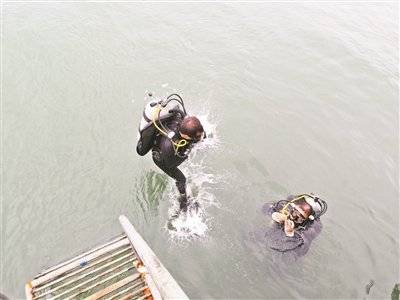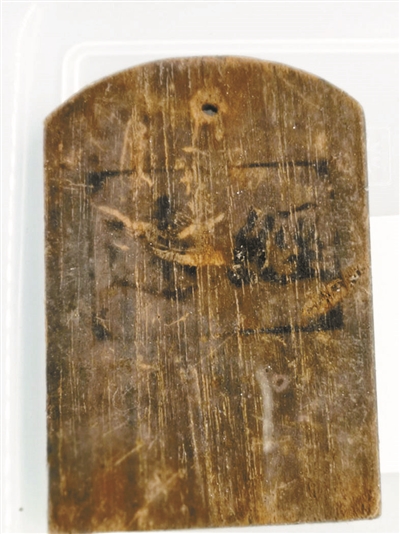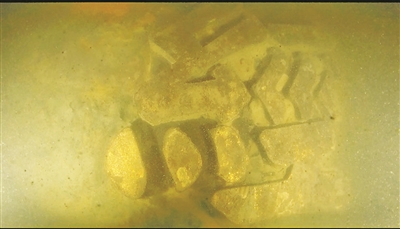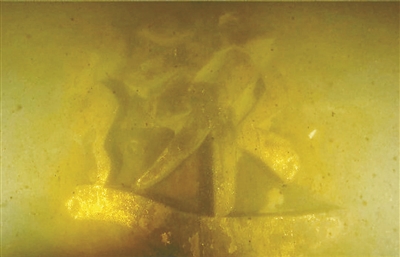How to find a ship that has been sleeping for a hundred years? Archaeologists reveal more details




From July 13th to September 26th, National Cultural Heritage Administration Underwater Cultural Heritage Protection Center, Liaoning Provincial Institute of Cultural Relics and Archaeology, and Dalian Institute of Cultural Relics and Archaeology jointly conducted an archaeological investigation on the wreckage of an iron sunken ship in Dalian waters, and confirmed that the ship was a far-off ship sunk by Beiyang Navy in the Sino-Japanese War of 1894-1895. This is another major achievement in underwater archaeology in China after Zhiyuan Ship. After the news was released, it triggered a heated discussion in society. On September 28th, the staff who participated in the archaeology gave more details about the sunken ship passing through the distant ship in the Sino-Japanese War in Dalian waters discovered by the underwater archaeological team.
Disappeared for a hundred years, the sinking ship appeared in Dalian waters.
The ship that disappeared for more than 100 years was found. Recently, the news released by National Cultural Heritage Administration triggered a hot discussion among netizens. Jingyuan Ship was an important warship of Beiyang Navy in the late Qing Dynasty, which was sunk by the Japanese in the Sino-Japanese War of 1894-1895, and its whereabouts were unknown for more than a century.
In the summer of 2014, an underwater archaeological team found the remains of an iron sunken ship in the south sea area of Laorenshi, Heidao, Zhuanghe, Dalian, Liaoning Province based on data clues and magnetometer geophysical data, and speculated that it was a passing ship, but it lacked decisive evidence. Therefore, from July 13th to September 26th this year, National Cultural Heritage Administration Underwater Cultural Heritage Protection Center, Liaoning Provincial Institute of Cultural Relics and Archaeology, and Dalian Institute of Cultural Relics and Archaeology jointly conducted an archaeological investigation on the iron wreck in Dalian waters, and confirmed that the remains of this ship were the Jing Yuan ship of Beiyang Navy.
On September 28th, Zhou Chunshui, the leader of National Cultural Heritage Administration Underwater Cultural Heritage Protection Center who participated in the underwater archaeology of the long-distance ship, wrote in official website, National Cultural Heritage Administration that the water depth of the site area was about 10 meters, and the visibility was poor, and the visibility was less than half a meter for a long time during the archaeological period. To this end, the investigation has increased the investment in geophysical exploration technology, and used many technologies such as multi-beam sea survey, three-dimensional imaging and differential positioning.
After a hundred years, the name of the ship is still hanging on the side of the ship
Zhou Chunshui and others said that this underwater archaeological investigation is divided into two stages. The main goal of the first stage is to search, locate and evaluate the sinking situation. The underwater archaeological team used equipment to collect relic data, and through data comparison and file analysis, combined with diving exploration, searched, found and confirmed the exact position of the passing ship, and found the ring protective armor belt "Tiejiabao" which can mark its identity. At the same time, according to the attitude and inclination of the hull, the hull should be inverted.
The goal of the second stage is to partially clean up, so as to confirm the identity of the sunken ship and find out the preservation status of the sunken ship. The underwater archaeological team carried out sand pumping operation on the starboard outer wall of the middle and rear section of the hull, and revealed the hull structure on the side one after another, including gangways, portholes, various pipeline facilities, etc., and all the components were in an inverted state, which confirmed the inference that the hull was upside down.
In order to determine the identity of the sunken ship, the underwater archaeological team made a special work plan, and finally found the name of the "Jingyuan" ship buried 5.5 meters below the seabed on September 15, and it has been hanging on the outer wall of the ship’s side for more than 100 years. Underwater archaeologists also unearthed a wooden sign with the word "Jingyuan" stamped on it during the site cleaning. Before the end of the work, the archaeological team covered the wooden ship names and backfilled all the extracted hull areas. Finally, zinc blocks are welded along the periphery of Tiejiabao by sacrificing anodes to delay the corrosion of iron ships by seawater.
Traces of fire can be seen in some cultural relics coming out of the water.
Zhou Chunshui and others introduced that a large number of relics were extracted from the water in this survey, and more than 500 specimens were selected by archaeologists. Among them, the representative cultural relics include: small iron boilers (providing steam power for windlass hoists), diagonal trusses, large transverse ribs, portholes, hatches, armored fort linings and other hull structural facilities, Mao Se rifle bullets, Weiblie revolver bullets, 37mm Hakikkai rapid-fire shells, 47mm Hakikkai shells. In addition, the archaeologists also found 53mm Grusen gun cartridge and 120mm shell primer, both of which are not found in the factory files of Jingyuan Ship. Archaeologists speculate that it should be an emergency weapon and equipment added before the Sino-Japanese War of 1894 to strengthen the firepower of the stern.
Archaeologists also found a "canopy pole" used to hang a sunshade. The wood was covered with fire marks and almost carbonized, which confirmed the theory that Jingyuan ship was hit and caught fire in the naval battle. At the bow of the ship, archaeologists found some hookahs, mahjong tiles, mazars, oil lamps, wooden pots, shoes soles and other items. According to reports, this place is the living quarters of junior soldiers.
Archaeologists have found many bullets of Mao Se rifles in the bow area of Jingyuan Ship. It is speculated that this may indicate that at the beginning of the naval battle, the soldiers of Jingyuan Ship had plans to board Japanese warships with guns.
"The underwater archaeological achievements of the remote ship have extremely important historical and scientific value for the study of the history of the Sino-Japanese War, the history of the navy and the history of ships. The discovery of some investigation objects provides a new understanding for the research work, such as ‘ Jingyuan ’ The nameplate is the nameplate of the Beiyang Navy warship discovered for the first time, and its material, technology and installation method are also clear for the first time. " Zhou Chunshui and others introduced.
conversation
Archaeologist: The soldiers who passed the distant ship were heroes who fought to the last minute.
Yu Haiming, an underwater archaeologist from Dalian Institute of Cultural Relics and Archaeology, participated in the underwater archaeology of the remote ship. On the 28th, he told the Beijing Youth Daily reporter that the most crucial evidence to prove the true identity of the remote ship — — The "Jingyuan" nameplate was discovered before a typhoon, when archaeology had come to an end. "This is the most shocking moment in the whole archaeological process."
Beiqing Daily: How did you participate in this underwater archaeology?
Yu Haiming: I completed the training of underwater archaeology from May to June this year, because the sunken warship in this investigation was on Zhuanghe side of Dalian, so I was invited by National Cultural Heritage Administration Underwater Cultural Heritage Protection Center to participate in the investigation of the sunken ship passing through the distant ship in this Sino-Japanese War. I came to the archaeological site of Jingyuan Ship in early July and participated in the follow-up archaeological investigation.
Beiqing Daily: You said that your views on Beiyang Navy have changed through this archaeological investigation?
Yu Haiming: In the past, we might think that Beiyang Navy was influenced by the Qing Dynasty and had many corruption problems, which led to the defeat of Beiyang Navy in the Sino-Japanese War. Many people who participated in the underwater archaeology this time are very familiar with the history of Beiyang Navy. Every day, everyone works and lives together, and the topic of conversation is Beiyang Navy. They will also take out old photos and materials, and analyze each other together. I feel that my previous views may be misunderstood.
It can be seen that Beiyang Navy has been affected by corruption, but the officers and men of Beiyang Navy are indeed heroes. Not only did they fight to the last minute after crossing the distant ship, but in some diaries left by the Japanese army, they also admired the spirit of Beiyang Navy in fighting to the end. A large number of Beiyang Navy officers died in battle or committed suicide.
Beiqing Daily: What impressed you the most in this survey?
Yu Haiming: What impressed me the most was when the word "Jingyuan" was discovered in the later period of archaeology. The typhoon was coming soon that day. At 6 o’clock in the morning, an archaeological teacher went into the water to investigate. He first photographed the word "far" passing by a distant ship. At that time, the wind and waves were already very heavy, so we asked him to get out of the water quickly. Then everyone looked at the instrument and basically confirmed that the sunken ship must have passed by a distant ship. Later, we successfully found the word "Jing" with gold on it, and everyone was very excited. The identity of Jing Yuan Ship was confirmed like this.
Beiqing Daily: How was the wooden sign with the word "Jingyuan" discovered?
Yu Haiming: The’ re’ was drawn when pumping sand. There are many things like shells in the pumped sand. During sorting, we found this’ re’ in it. Because when the distant ship sinks, it carries a lot of coal, and these cinders will dye some wooden cultural relics black. This’re like this. At first, I couldn’t see what it was, but I could vaguely see the word "Jing". Then I took this’re "and went to the team leader. According to the experience, the team leader judged that it might be the word "Jingyuan". Later, through some processing, the word "Jingyuan" appeared.
Beiqing Daily: What impressed you about the cultural relics coming out of the water?
Yu Haiming: Some teachers are very familiar with Beiyang Navy. I found a 120 mm shell primer when sorting cultural relics. I don’t know much about this cultural relic, but one teacher was very excited. He said that this kind of shell itself was not recorded in the equipment of Jingyuan Ship, and it was suspected that it was specially added to prepare for the Sino-Japanese War. It can be seen that Beiyang Navy had actively prepared its combat effectiveness before the war. In addition, unlike some previous legends, we found some hookahs in archaeology, but we didn’t find any big hookahs. The hookahs are normal when sailing on the sea, and we know that we need such a pastime when sailing. This is inconsistent with the previous statement that some Beiyang Navy officers smoked opium.
memory
The distant ship is a distant ship.
Jingyuan Ship is one of the important warships of China Beiyang Navy in Qing Dynasty. It was built by German Vulcan Shipyard and launched on January 3, 1887. It has a length of 82.4 meters (waterline), a width of about 12 meters and a speed of 15.5 knots. Its main weapons include Krupp 210 mm, 2 caliber guns, 2 150 mm caliber guns and 4 torpedo tubes.
Jing Yuan Ship returned to China at the end of 1887, and at that time, as the current ship of Zhiyuan Ship, he was incorporated into Beiyang Navy. Deng Shichang and Lin Yongsheng, the famous generals, respectively served as the duct tape (captains) of the two ships. On September 17th, 1894, the Sino-Japanese Sino-Japanese Sino-Japanese War of 1894 broke out in Dadonggou in the northern part of the Yellow Sea. The officers and men of Beiyang Navy fought bravely against Japan, and the Qing army lost four warships in this battle, namely Yang Wei, Chaoyong, Zhiyuan and Jingyuan.
In the battle, Zhiyuan and Jingyuan, under the leadership of Deng Shichang and Lin Yongsheng, fought bravely to kill the enemy, but unfortunately they sank successively. Among them, the distant ship was besieged by four Japanese ships, namely Yoshino, Takachiho, Akinzhou and Nobukuro. The officers and men of the whole ship, led by Lin Yongsheng, took up the battle bravely and never raised the flag until their death. There are more than 200 officers and men in the whole ship. Except for more than 10 people who swam to the nearby Old Man Stone to survive, most of them sank with the ship.
Zhou Chunshui and others wrote that the Sino-Japanese War of 1894-1895 was a landmark historical event in the modern history of East Asia. For the Qing Empire, this war ended the historical process in which Emperor Guangxu, Li Hongzhang and other upper-level rulers in the late Qing Dynasty tried to realize the rich country of Qiang Bing through the Westernization Movement and naval construction, and China slipped into the abyss of being poor and weak and being trampled upon by others. For the Japanese side, it became famous in the world after the decisive battle and World War I, and finally it was possible to re-examine China as a victor, thus fueling its ambition of conquering China and dominating East Asia. This edition/reporter Qu Chang